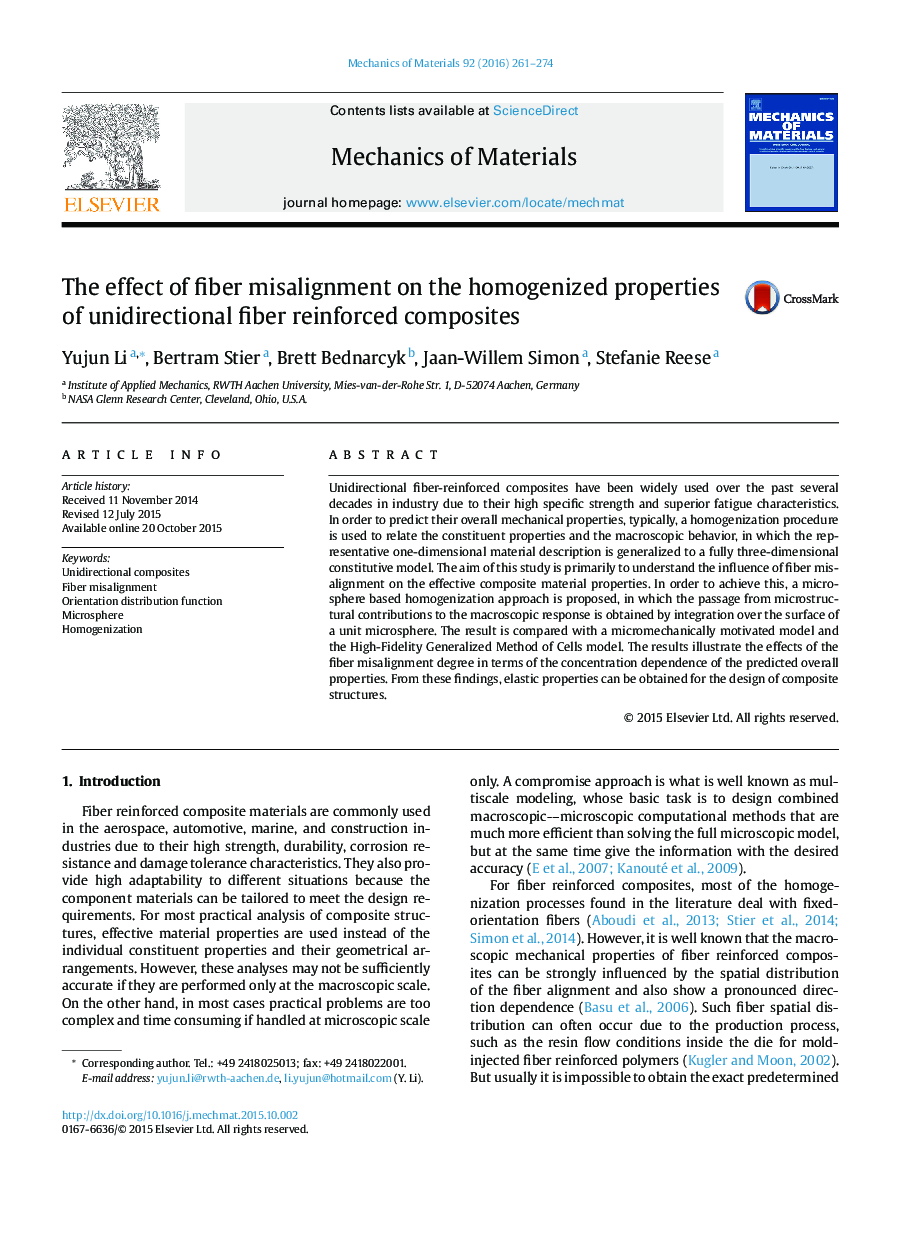| Article ID | Journal | Published Year | Pages | File Type |
|---|---|---|---|---|
| 797496 | Mechanics of Materials | 2016 | 14 Pages |
•A microsphere based homogenization approach is proposed.•The predictions from the microsphere, HFGMC and the structural tensors approaches are compared and evaluated.•The influence of fiber misalignment on the effective composite mechanical properties is evaluated.
Unidirectional fiber-reinforced composites have been widely used over the past several decades in industry due to their high specific strength and superior fatigue characteristics. In order to predict their overall mechanical properties, typically, a homogenization procedure is used to relate the constituent properties and the macroscopic behavior, in which the representative one-dimensional material description is generalized to a fully three-dimensional constitutive model. The aim of this study is primarily to understand the influence of fiber misalignment on the effective composite material properties. In order to achieve this, a microsphere based homogenization approach is proposed, in which the passage from microstructural contributions to the macroscopic response is obtained by integration over the surface of a unit microsphere. The result is compared with a micromechanically motivated model and the High-Fidelity Generalized Method of Cells model. The results illustrate the effects of the fiber misalignment degree in terms of the concentration dependence of the predicted overall properties. From these findings, elastic properties can be obtained for the design of composite structures.
